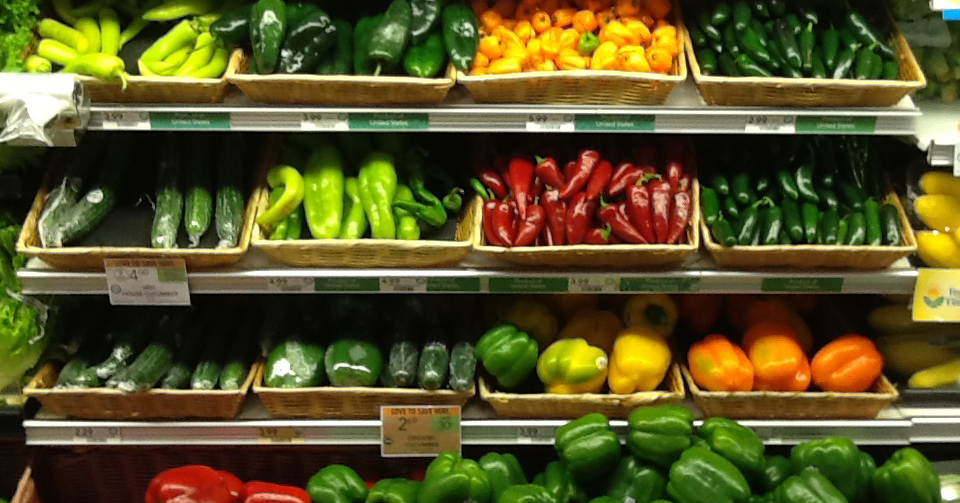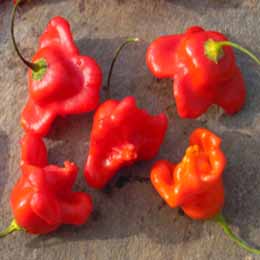Plants / Plantes
Chilli peppers – Capsicum species
Click on an image to enlarge it / Cliquez sur une image pour l’agrandir
I have just been to a supermarket selling 15 different types of chilli pepper and that’s not including the yellow, red, orange and green bell or sweet pepper. It dawned on me that I knew next to nothing about chilli peppers and this prompted some research and this article.
The ‘exchange’ of plants from the new to the old world included the solanaceous crops tomato, capsicum, potato and tobacco. It was the conquistadors who ‘discovered’ chilli peppers in Mexico, Peru, Ecuador and Bolivia and brought them to Spain in 1493. As a result they are now used in many famous regional dishes throughout the Mediterranean basin including the Basque region of France (Piment d’Espelette),
Spain (fried Padron tapas), Portugal (prawn piri-piri, actually from Mozambique!), Greece (stuffed peppers), Italy (chilli sauce for pizzas) and so on into Hungary (paprika). To-day, over 40 Capsicum species are listed in ‘The Plant List’, the authoritative list of all known plant species.
Chilli peppers can be grown from seed or from transplants. Plants Potagers based in Roquedur in the Gard sell a wide range of piment and poivron plants, which can be bought at their nursery or at many spring plant fairs, including the one at Sérignan-du-Comtat. See their website for details, and a catalogue. Most of the big seed houses including Baumaux (France), Chiltern (UK) and Franchi (Italy) carry a range of chilli pepper seeds.
Chilli peppers are easy to grow from seed and may be treated as tomatoes. Wait until all signs of cold weather have finished or sow under some protection. Sow seeds three or four per pot using standard compost and thin out as soon as possible after germination to the single strongest plant in each pot. Water as necessary. Plant outdoors when temperatures are at least 15 -20˚C and the soil is warm. Plant 25-30 cm apart. When the plant is well established, pinch out the central growing tip to encourage branching. Water with a tomato fertiliser every two weeks. Peppers change colour (and heat) as they ripen from yellow/green through to orange/red.
The hotness of chilli peppers comes from capsaicin which is measured on the Scoville scale (SHU). The mildest pepper is the ‘sweet’ or bell pepper (Capsicum annuum) which is rated 0 SHU. The ‘hottest’ or most stringent chilli pepper is aptly named ‘Carolina reaper’ (Capsicum chinense) rated a stunning, and mouth burning, 1.57 million SHU. To me hot is hot and not particularly tasty however there are those who find ‘heat’ very attractive.
Chilli pepper is a fascinating subject involving history, botany, geography, cooking, travel and much, much more.
Text: David Bracey
Photos: David Bracey and Plants Potagers
Note from editor:
I have grown several of the peppers pictured above, buying new plants each year at the Sérignan plant fair and putting them in pots. Capsicum annuum ‘Royal Black’ is particularly decorative and very tasty.
![]()








